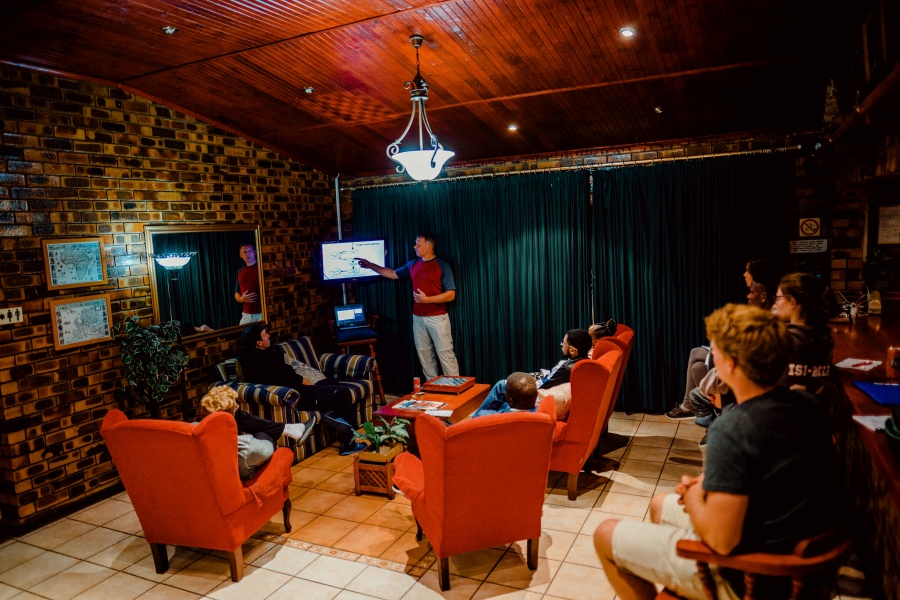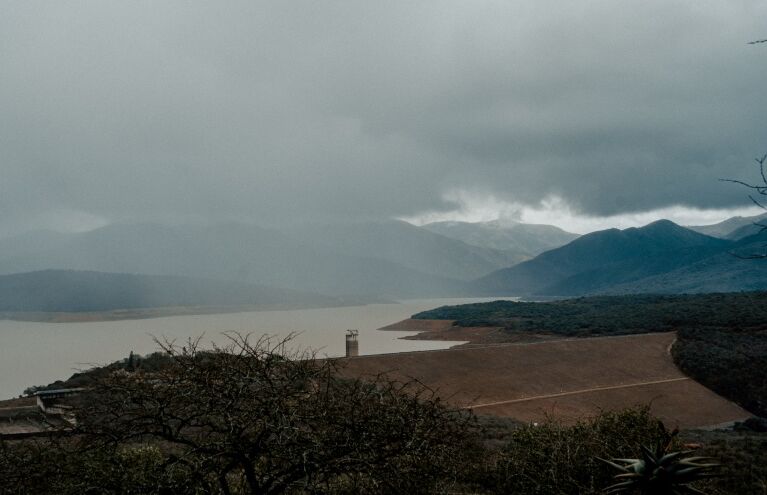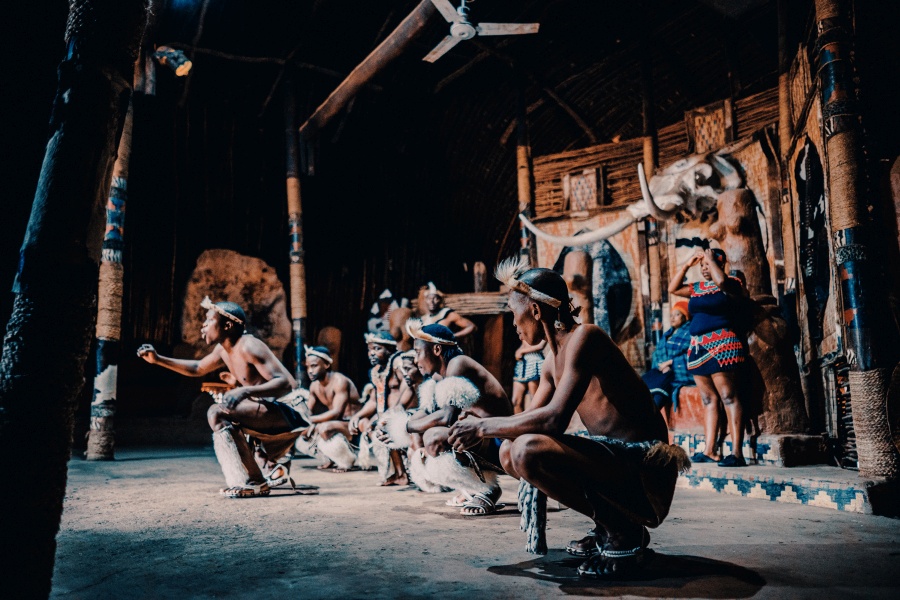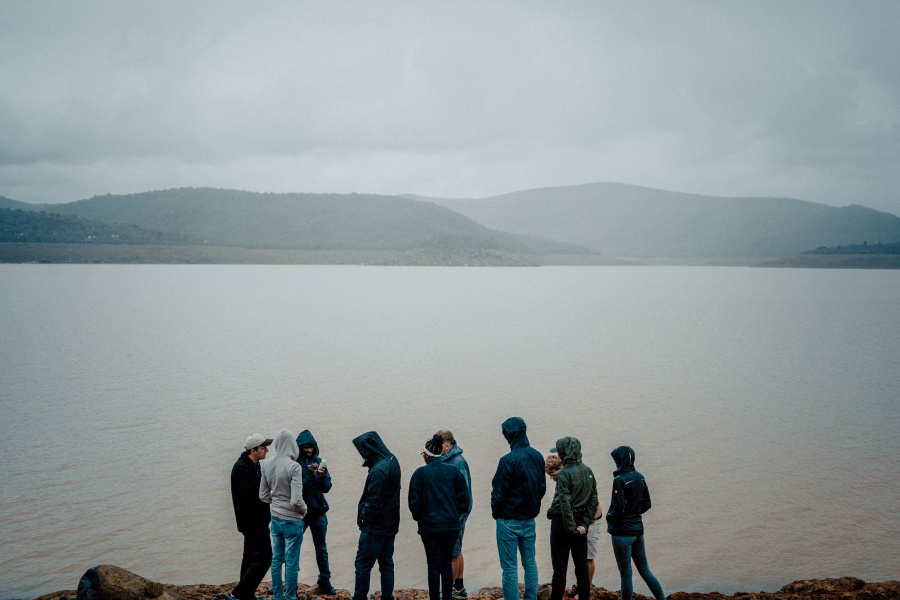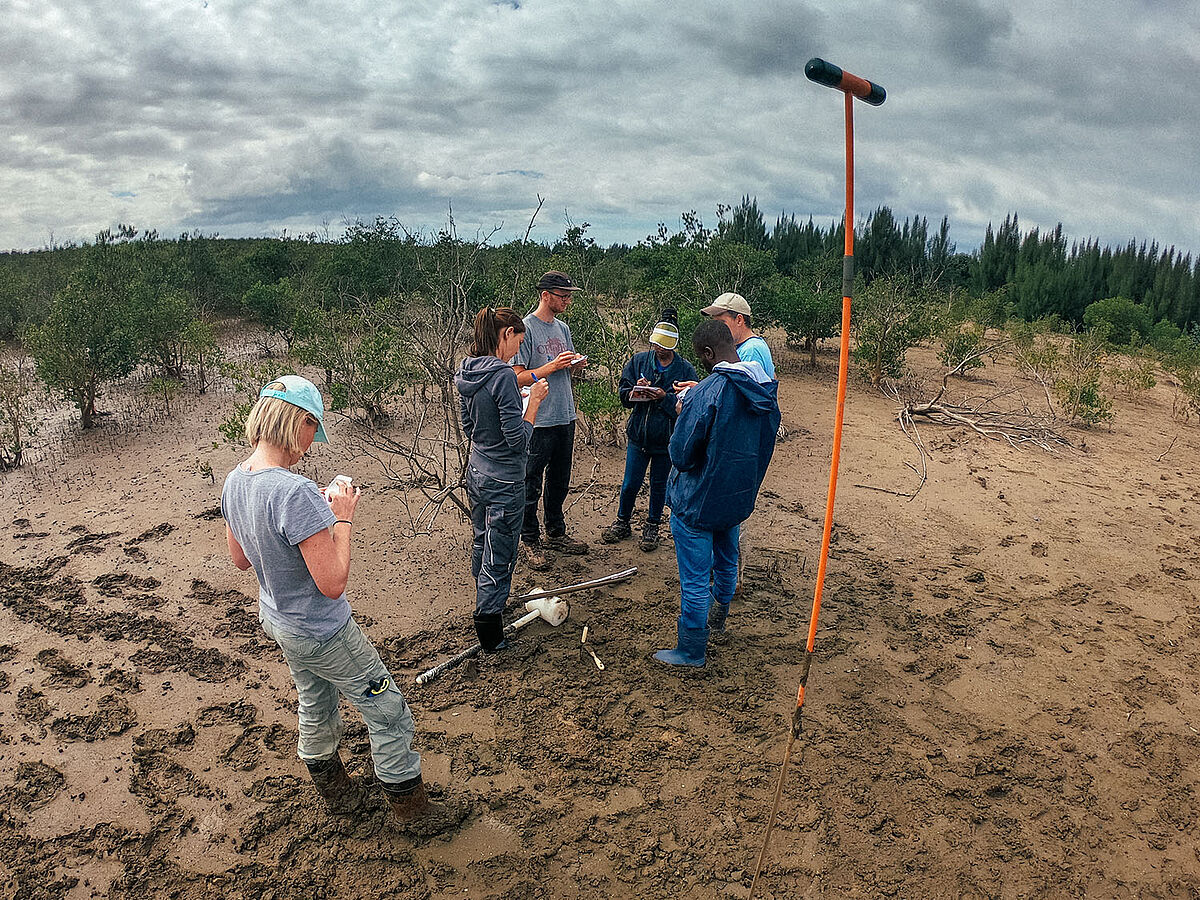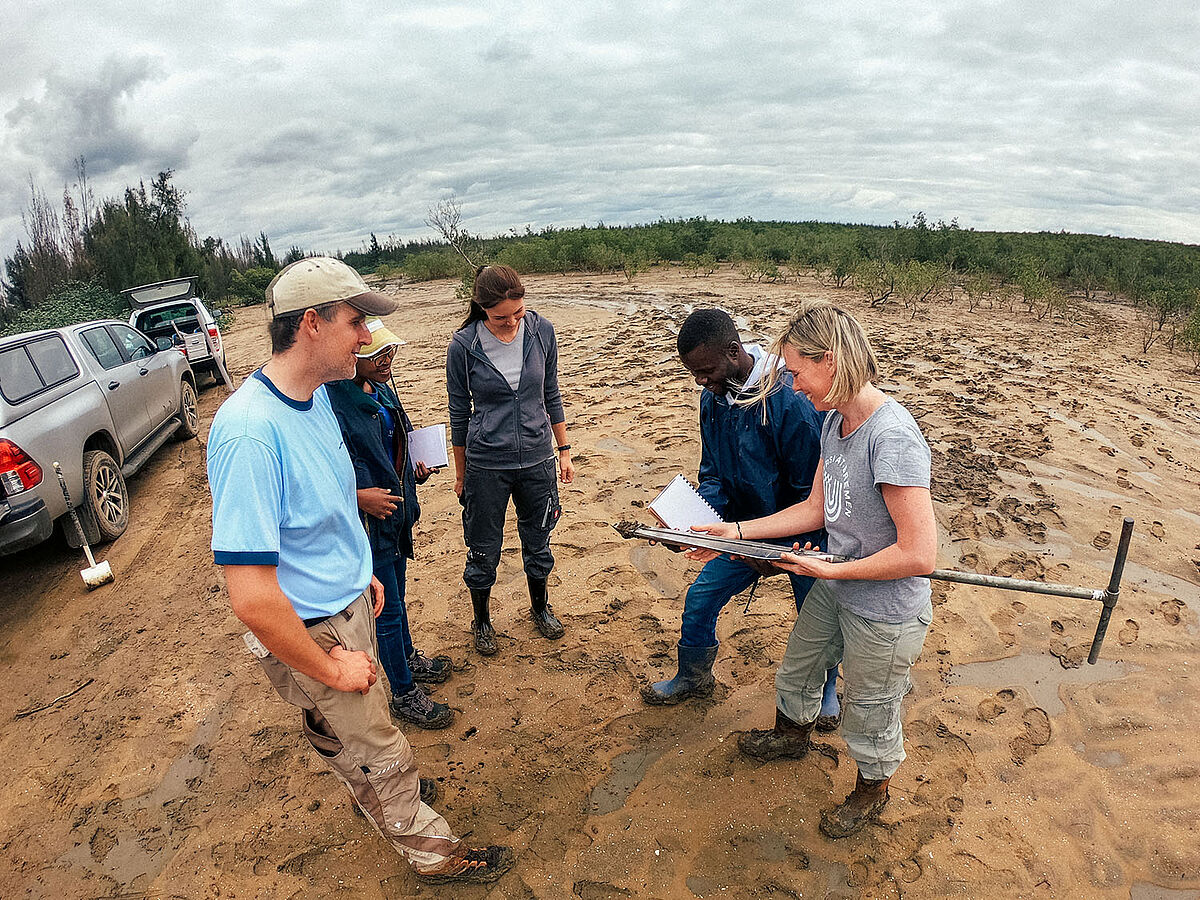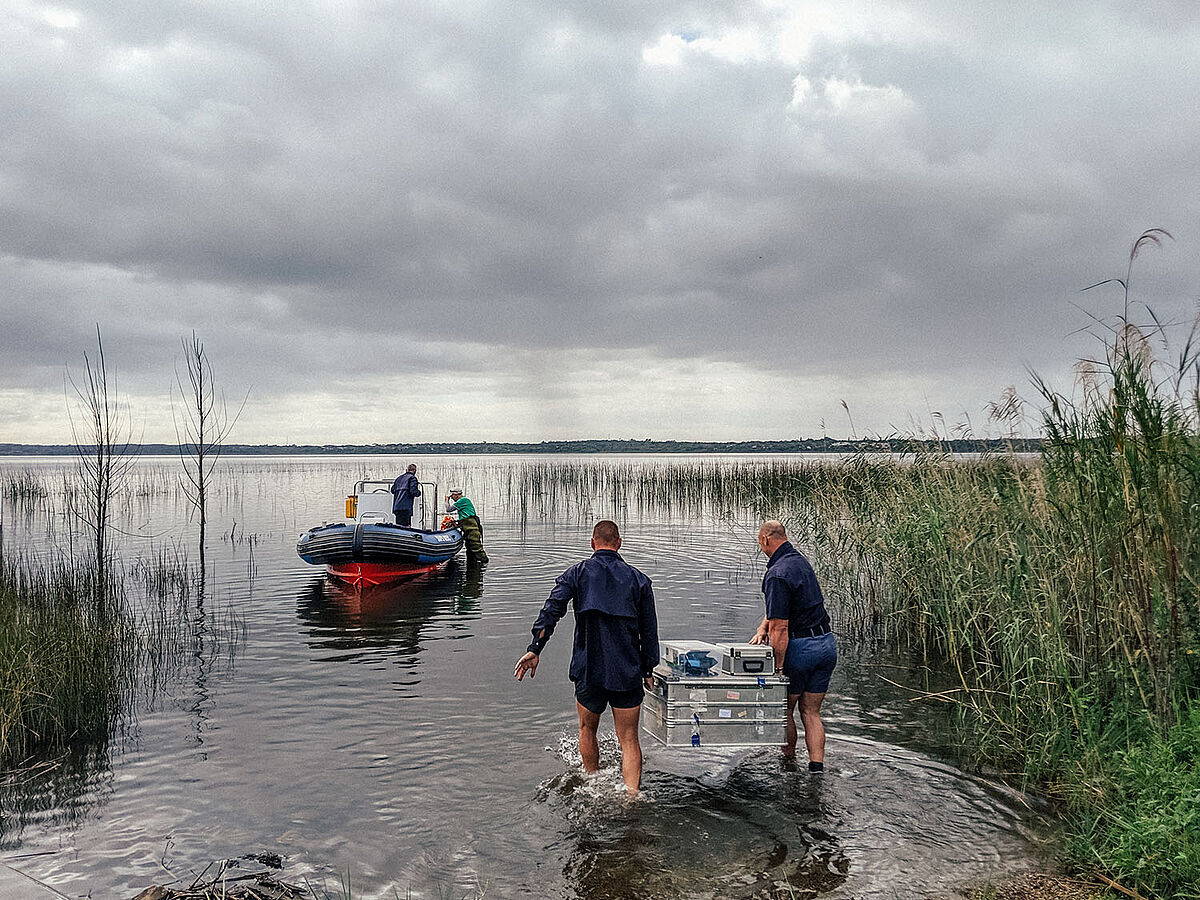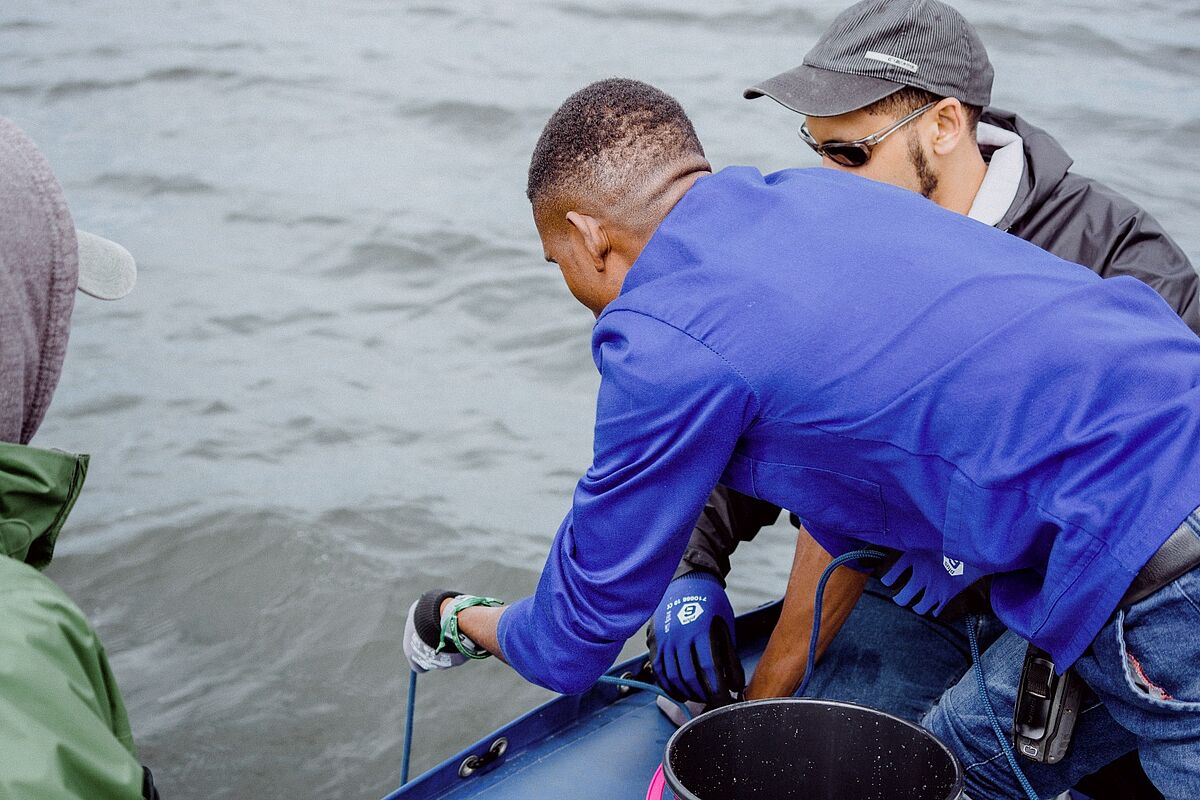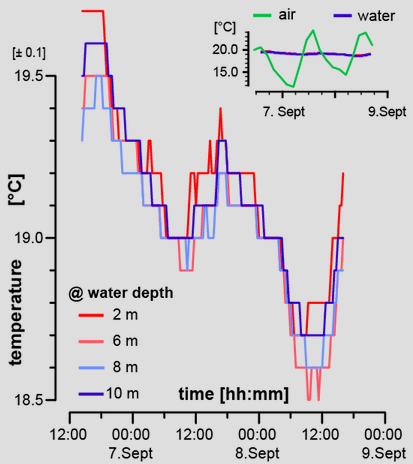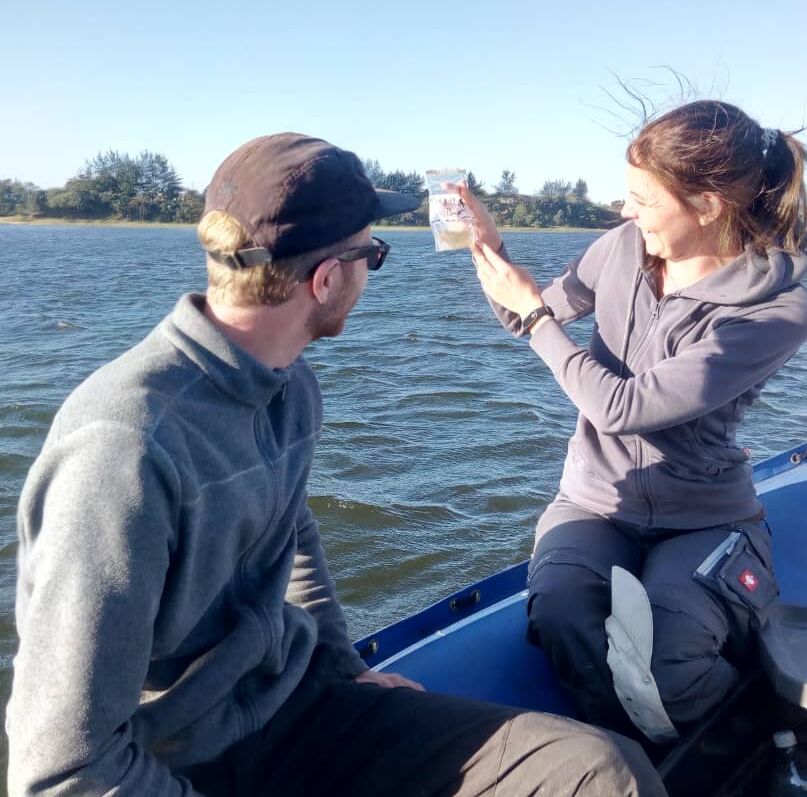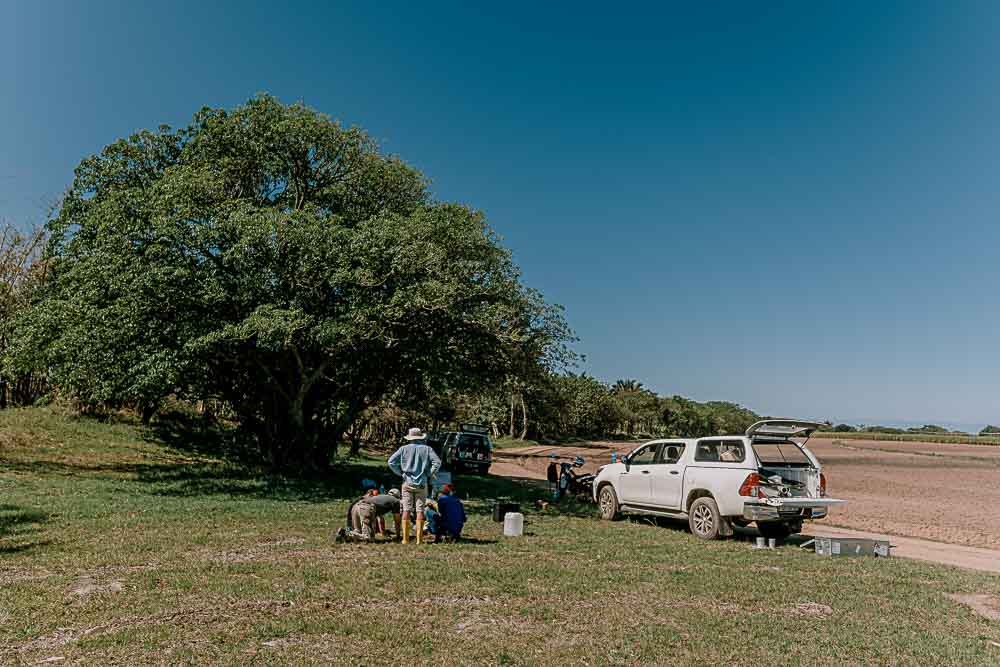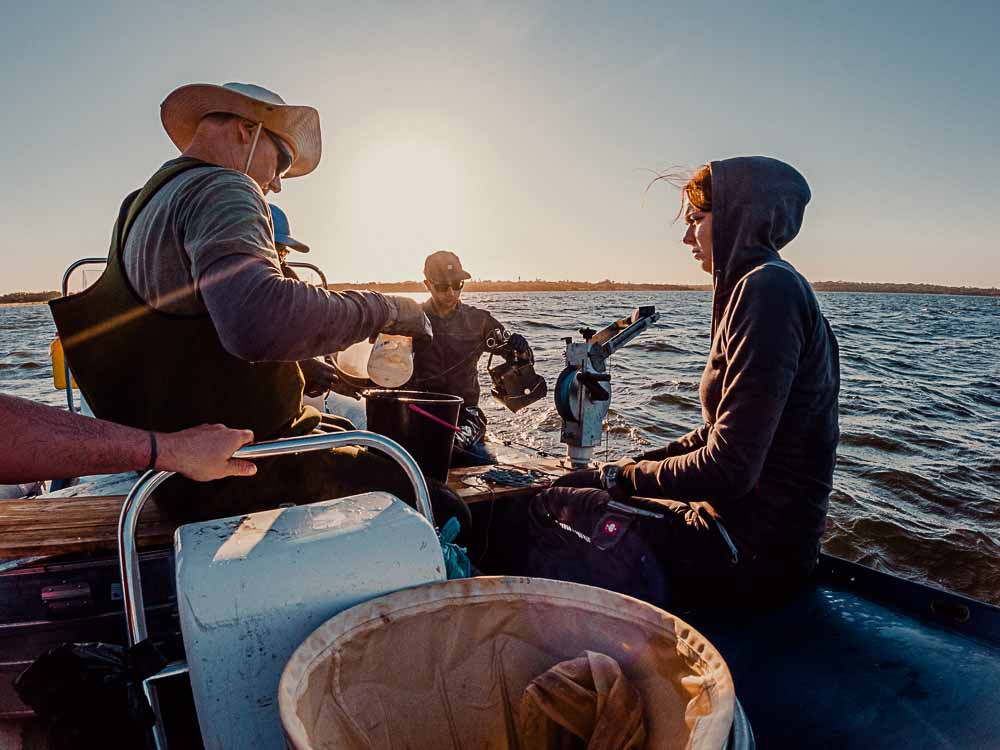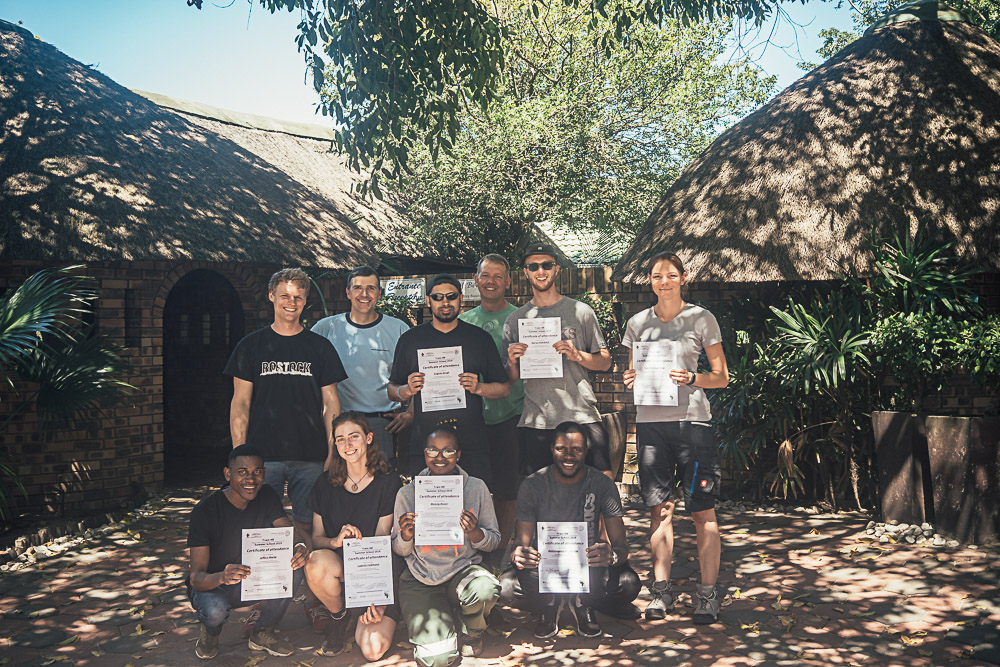Daily Blog from the Train-ME summer school in South Africa

Day 1: 5th of September 2019
Rain, heavy rain! That is how Durban, South Africa welcomed us after travelling for nearly 20 hours. The three of us, Caroline, Isabella and Marius, who are German geography students from Greifswald University, and Magnus our photographer for the summer school, accompanied Finn, a research associate at the university, met at the airport with Eugene from the University of Cape Town, who had just finished his PhD in Geology. Afterwards we met with Jeff from Copperbelt University in Zambia, who is studying wildlife management. After we picked up our rental cars we drove the last two hours to Richards Bay, which will be the base for the week of our stay. Here we also met with Torsten and Paul who already arrived two days before in Pietermaritzburg to take samples. During the afternoon the last two participants, Moteng who is doing her Masters in Palynology at the University of the Witwatersrand in Johannesburg and Balemogeng from Botswana who is studying MPhil in Natural Resource Management at Okavango Research Institute, arrived at Richards Bay Airport. After a short break to get settled and rest for a moment, we met for dinner and started to get to know each other. Subsequently, Torsten, Finn and Paul gave us an introduction to the TRACES project and we discussed the plan for the upcoming days. They explained that we will be working in terrestrial and aquatic settings. A boat will be used for aquatic sampling. We were then divided into two subgroups as the boat only has room for four students. Since most of us were very tired we went to bed quite early, looking forward to the days ahead of us.
Day 2: 6th of September 2019
We started the second day with breakfast at our lodge and then got ready to go. The goal of the day was to broaden our knowledge about the Zulu culture as we are in the province of KwaZulu-Natal, home of the Zulu kingdom. So we jumped into our cars and made our way to Shakaland, a Zulu museum village located one hour inland from Richards Bay. On our arrival we were greeted by our tour guide and, of course, rain. He showed us around and we learned various elements about the traditions of the Zulu culture, their traditional homesteads, fighting techniques during the time of King Shaka Zulu. In the end we had the chance to attend a Zulu dance show, which was really impressive. Afterwards we had lunch at the restaurant of the museum with a scenic view above Lake Phobane (Goedertrouw Dam), which was our next destination. The lake serves as a fresh water reservoir for the town of Richards Bay. We reached the reservoir via a gravel road. Sampling the reservoir forms part of the TRACES project as samples from the lake will be used to detect heavy metals within its sediment. Most reservoirs suffer the problem of siltation which decreases the volume of the lake. Hence these lakes are dredged and the sediments are used as agricultural fertilisers. As a result, it is one of the objectives of the project to evaluate the sedimentation rate and sediment composition of various reservoirs in South Africa. Our goal today was to take a water sample and to assess if it is possible to place a sediment trap some time next week. Jeff and Balemogeng were the first ones to take a sample at the lake, while Torsten briefly explained the necessary steps in taking water samples. After that we went home and loaded the sampling equipment into the cars for the next day when actual field work will start. One group will start with terrestrial and the other with aquatic field work. After two days the groups will rotate. All of us are really keen on what is going to happen.
Day 3: 7th of September 2019
Group 1 We got up bright and early to start our first day of field work. One group went to the harbour and the other went to Lake Mzingazi to do terrestrial and aquatic field work, respectively. The terrestrial group started at an embayment of the harbour with mangroves growing in there. At first we detected suitable locations to extract cores. Thereafter we applied several coring methods, such as the gauge auger (Pürckhauer), Russian corer (Klappsonde) and percussion corer. A one meter core was extracted using the gauge auger. We learnt that this coring method can result in loss of sediment. We then extracted a three meter core with a percussion corer. After retrieving the core we described the lithology (colour and grain size) and shells of carbonate organisms (bivalves, gastropods) occurring in the sediment using hydrochloric acid (HCl). Jemma, a researcher from the University of KwaZulu-Natal, also joined us today to collect pollen samples from the sediment. We ended the day by taking a walk along the beach near the harbour before making our way back to the lodge.
Finn, Eugene, Isabella, Jeff and Magnus formed Group 2 who would sample Lake Mzingazi close to the accommodation where we stayed. Our day started at 08:00 where the police came to meet us at our accommodation to accompany us to Lake Mzingazi. Three friendly policemen assisted us to load our sampling equipment onto the boat when we arrived at the lake. After the boat was loaded we set off to our first few sampling points, where we sent down a box corer and short corer to sample the surface sediment and water of the lake bottom. We also retrieved a slightly longer core of 1.4 m in length. After coring we went for lunch where we had a short break and afterwards loaded the boat with equipment for plankton sampling and water measurements. After lunch we tried to locate the deepest site and deployed a line of temperature monitors there to determine if the lake is stratified according to temperature. For the rest of the afternoon we tested the water measuring equipment that measured salinity, pH, electrical conductivity, dissolved oxygen and temperature, as well as deployed a plankton net to sample water containing any microscopic aquatic planktonic organisms at two sites around the lake. We returned to our accommodation wet and dirty before sunset.
Day 4: 8th of September 2019
Group 1: We left the lodge at 08:00 and made our way to the harbour. The first coring device we tried today was the vibracorer, provided by Jemma, from which two cores were extracted. Following lunch, we extracted two more cores using the percussion corer (Cobra Motor Hammer). Thereafter we collected water samples at Pelican Island, Richards Bay harbour, Alkanstrand beach and at the outflow of the Mzingazi canal, where we tried to flee from mud resembling the outline of a crocodile and then headed back to the lodge.
Group 2:
We made our way back to Lake Mzingazi in the morning and boarded our motorboat. We visited 15 grid-spots in the lake some 500m apart. At each spot we used the Kemmerer water sampler and box corer. Somehow, we were persuaded to have no lunch break and we continued to take short sediment cores. We learned the pros and cons of different gravitiy corer types. At the last coring site we had to repeat the coring three times before we succeeded, because the water-sediment interface was too murky (and indication that the coring process was imperfect). Our last task before we returned back to shore, was the lifting of the chain of water temperature data logger, which we placed in the water 24 hours ago. At the lodge, we analysed today's water samples for ammonia, sulphate and phosphate until dinner time at 19:00. After dinner, we read the water temperature data from the different depth. The recorder at 4m water depth failed. The temperature record reveals that the entire water column is following the daily air temperature, but with a much damped amplitude. Thermal stratification is not established.
Day 5: 9th of September 2019
Group 1: On our first day at the lake we learned how to apply several sampling devices, such as the box corer and Uwitec corer. We retrieved several cores from the shallow areas, the longest one having a length of 89 cm. After lunch Finn showed us how to take water samples at different depth in the field to measure the water temperature, conductivity, pH value and oxygen of the samples. We also collected plankton using a plankton net and ended our day by collecting thermometers attached to a buoy, which had been in the lake since Saturday.
Group 2: Today was our first day of terrestrial coring. The plan was to take some cores from a former floodplain next to the Mhlatuze river. Apparently, this area belongs to the UVS farm company, which is known for its sugar cane production. After we got the permission to work on their ground we got a very interesting and detailed introduction to the company, its soil and the way they grow and harvest their plants from one of their interns, Siphamandla. Sugar cane can provide up to 9 cycles of fruit due to the subtropical climate in the area. They are harvesting between 80 and 100 tons per hectare. However, the price is not determined by the amount in tons, but by the percentage of sucrose it contains. Lately, UVS started to grow various plants like potatoes, macadamia and timber as it can be more advantageous for them. After we found a solid spot for coring the work started. First, we got to know the Pürckhauer and tried ourselves at a core description. Color, grain size and carbonate content were only a few of the classifications which were needed. Later we worked with the Cobra Motor Hammer, which is a massive tool compared to the Pürckhauer we used before. We learned how to deal with it properly and found out that it is team work to get it going. It was really fun to handle the big equipment. After a long day in the field we drove to the beach as the sun set. It was a nice day in the field even if some of us got sunburnt and we did not see any black mamba snakes in the end.
Day 6: 10th of September 2019
Group 1: We went back to Lake Mzingazi to set up a sediment trap we prepared the previous evening. Following that, we applied the devices we learnt yesterday such as box corer to retrieve sediments, the Uwitec corer to collect benthos and the plankton net to sample plankton. At several points we took water samples at different depths using a water sampler and a multi parameter probe to measure the pH value, electrical conductivity, temperature and oxygen to deploy a water profile. We went home in a good mood as we are able to accomplish our goals of the day and looked forward to having a braai.
Group 2: We drove to the farm where we met up with Siphamandla again and took a water sample from the river. Siphamandla then showed us how he uses his gouge augers to sample the agricultural fields where he tests the soil for nutrient contents. Thereafter we started taking cores with the Cobra Moto Hammer equipment. We took 13 one metre length cores from two holes at the same site as yesterday where we learnt the different coring techniques. The last core was taken at 17h30. We then bid farewell to Siphamandla and we were on our way back to the accommodation.
Day 7: 11th of September 2019
The day started at 5 am when most of the group went to the beach to see the sunrise and returned before breakfast. After breakfast we packed up all the equipment and samples. Finn and Torsten presented the group with certificates. We then had to say goodbye to Torsten and Paul. Afterwards we then drove to uMhlatuze River and took a water sample. As part of our social responsibility we picked up four bags of trash surrounding the river. Thereafter we took a scenic drive to the uMlalazi Nature Reserve where we collected another water sample and walked through the mangrove swamp. We saw monkeys, zebras, a bee-eater, a kingfisher and antelope at the nature reserve
Our day ended like it start – at the beach.

